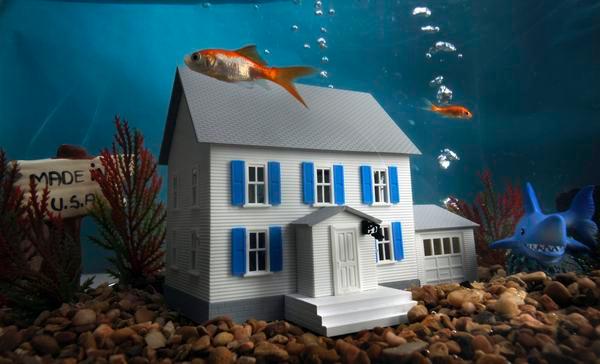While the number of underwater homes is headed generally downward nationwide, there are still swathes of the country where negative equity is almost the norm

There were nearly 5.5 million seriously underwater properties in the US during the first quarter, according to new data from ATTOM Data Solutions. That’s an increase from Q4 of 2016 but still down by more than 1.2 million from the first quarter of last year.
Seriously underwater properties – property where the loan amount was at least 25% higher than the estimated market value – accounted for 9.7% of all US properties with a mortgage in the first quarter, according to ATTOM.
But those numbers don’t tell the whole story, according to Darren Blomquist, senior vice president at ATTOM. While negative equity is on a mostly downward trend nationwide, there are still swathes of the country where underwater property is almost the norm.
“While negative equity continued to trend steadily downward in the first quarter, it remains stubbornly high in often-overlooked pockets of the housing market,” Blomquist said. “For example, we continue to see one in five properties seriously underwater in several Rust Belt cities, along with Las Vegas and central Florida. Additionally, close to one third of homes valued below $100,000 are still seriously underwater.”
And those underwater properties can pull down surrounding home values, Blomquist said.
“Several of the cities with the biggest quarterly increases in underwater properties saw a corresponding increase in share of distressed sales in the first quarter, creating a drag on overall home values…” Blomquist said.
Baltimore, Md. Saw the biggest quarterly increase in underwater homes, up 26,974. It was followed by Philadelphia (up 8,919), McAllen, Texas (up 7,746), Cleveland, Ohio (up 7,631), and St. Louis, Mo. (up 6,844). All of those markets still had fewer underwater properties in the first quarter than during the same period in 2016, ATTOM said.
Seriously underwater properties – property where the loan amount was at least 25% higher than the estimated market value – accounted for 9.7% of all US properties with a mortgage in the first quarter, according to ATTOM.
But those numbers don’t tell the whole story, according to Darren Blomquist, senior vice president at ATTOM. While negative equity is on a mostly downward trend nationwide, there are still swathes of the country where underwater property is almost the norm.
“While negative equity continued to trend steadily downward in the first quarter, it remains stubbornly high in often-overlooked pockets of the housing market,” Blomquist said. “For example, we continue to see one in five properties seriously underwater in several Rust Belt cities, along with Las Vegas and central Florida. Additionally, close to one third of homes valued below $100,000 are still seriously underwater.”
And those underwater properties can pull down surrounding home values, Blomquist said.
“Several of the cities with the biggest quarterly increases in underwater properties saw a corresponding increase in share of distressed sales in the first quarter, creating a drag on overall home values…” Blomquist said.
Baltimore, Md. Saw the biggest quarterly increase in underwater homes, up 26,974. It was followed by Philadelphia (up 8,919), McAllen, Texas (up 7,746), Cleveland, Ohio (up 7,631), and St. Louis, Mo. (up 6,844). All of those markets still had fewer underwater properties in the first quarter than during the same period in 2016, ATTOM said.



